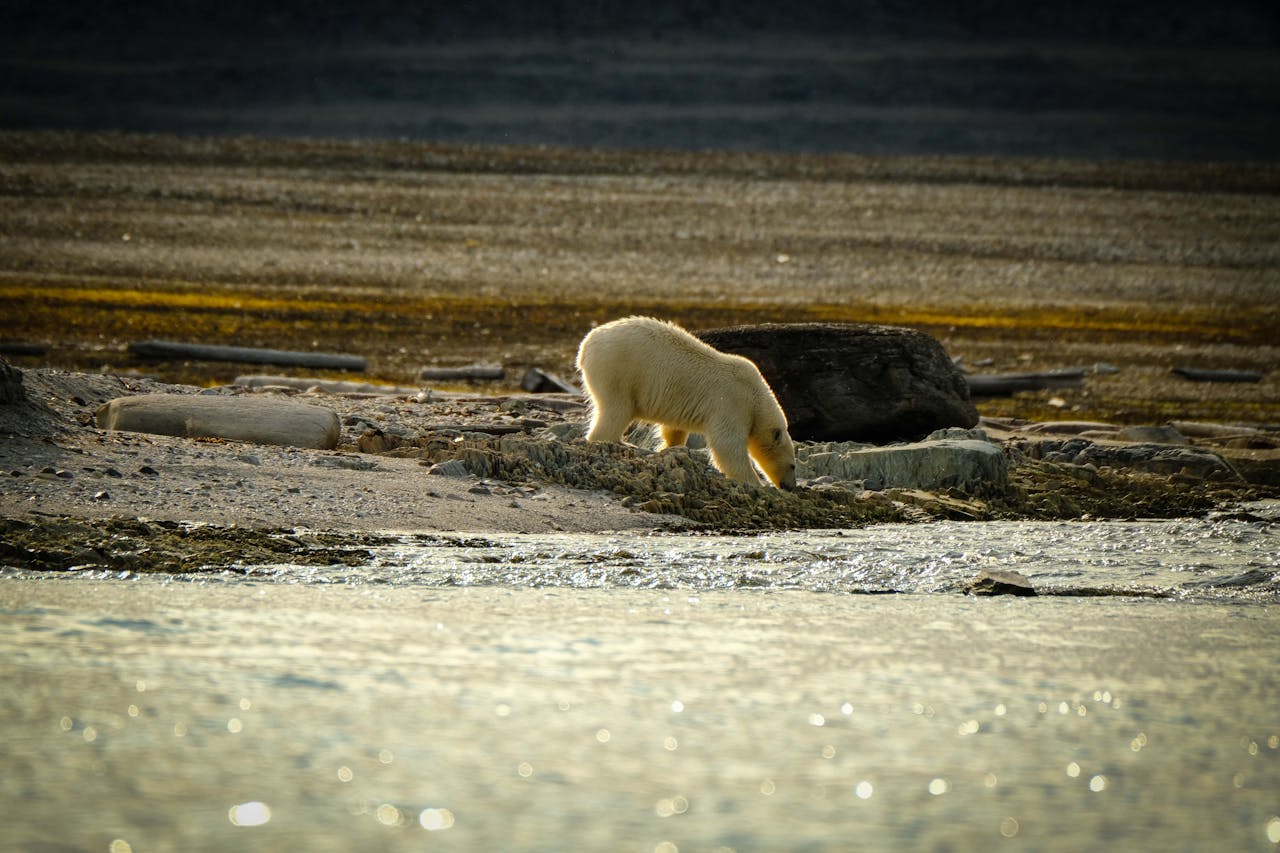Environment & Nature
Climate change linked to previously unseen injuries in polar bears, study finds
By Eilís Quinn, Eye on the Arctic, RCI

When rain freezes over snow or ice, it forms a hard, crusted layer. But when polar bears walk across it, they can break through this ice, leading to foot abrasions. (Pexels photo)
A new paper suggests that climate change is leading to previously unseen injuries in polar bears in some of the coldest parts of the Arctic.
To do the study, the scientists looked at polar bears in East Greenland and the Kane Basin, a waterway between Greenland and Canada’s Ellesmere Island in Nunavut, between 2012 and 2022.
Researchers noticed several issues with the animals including ice buildup, hair loss, and skin sores, usually on the feet of adult bears but also sometimes visible on other parts of the body.
“The most severely affected individuals had blocks of ice up to 30 cm in diameter adhered to the foot pads, deep, bleeding ulcerations of foot pads, and exhibited lameness,” the study said.
These injuries have not been observed during previous research in these areas or reported in the scientific literature.
Warming events linked to the injuries
The recent appearance of the injuries coincides with an increased freeze-thaw cycle in the High Arctic as the climate warms.
When rain freezes over snow or ice, it forms a hard, crusted layer. But when polar bears walk across it, they can break through this ice, leading to foot abrasions. These cuts can then develop into ulcers and cause both pain and mobility issues for the animals.
The researchers say this could be why the most severe abrasions were found on male polar bears.
The high prevalence of severe footpad ulcerations in adult males may be due to their large mass (approximately twice that of adult females) increasing the likelihood that they break the ice crust while walking, combined with males’ tendency to forgo hunting to travel long distances in spring while searching for estrous females,
the study said, referring to female polar bears that are ready to mate.
The rain-on-snow events and freeze-thaw cycle also make it easier for blocks of ice to accumulate on bears’ feet, especially as their fur and footpad structure hold onto snow and ice.
It is possible that large ice buildup can be traumatically removed during normal behaviors, resulting in some of the alopecia and ulcerations that we observed,
the study said.
The researchers said beyond the pain the animals may experience; the injuries could also affect their ability to travel on sea ice to hunt seals, their main food source. In turn, this could go on to affect their fat reserves.
Indigenous knowledge supports findings
To help make sense of their findings, the researchers interviewed Inuit hunters in Greenland and Nunavut to learn what they had observed on their hunts and what knowledge had been passed down to them from their ancestors regarding polar bear injuries.
The hunters said the injuries hadn’t been reported in the past.
In Nunavut, none of the interviewed hunters from subpopulations surrounding KB had previously observed these types of conditions on polar bears,
the study said.
“In Greenland, of the most experienced hunters had never seen alopecia or hair loss on the feet of polar bears, and had never seen erosive/ulcerative pododermatitis, and had never seen severe icing when shown images. Of the two hunters who reported seeing alopecia, one said he first observed it in 2022, the same year our observations were made.”
However, several hunters participating in the study said the injuries were similar to what they’ve noticed in their animals when mushing.
Several hunters commented on wet snow conditions that negatively impact sled dogs, noting they trim the hair between the pads to avoid ice accumulation and lameness,
the said. The hunters also noted that hard crust conditions can make travel difficult and tear dogs’ pads, leading them to suggest that this may be similar for polar bears.
No such injuries recorded in lower regions of the Arctic
The study found that polar bears south of 70°N have not shown signs of icing-related injuries. Researchers looked at data from 250 polar bear captures in East Greenland between 2015 and 2022 and saw no similar issues.
They also found that in the 1990s, more than 200 polar bears captured in Kane Basin and East Greenland didn’t show these injuries either, according to reports from the Governments of Nunavut and Greenland, suggesting that these kinds of injuries haven’t been seen in other polar bear populations either.
The researchers say the findings hit home the ways climate warming is affecting the Arctic in unexpected ways.
As climate warming continues, there is potential for the conditions we describe— as well as other unanticipated phenomena resulting from an altered physical environment—to have individual and potentially population-level effects.
The study was published Oct. 22 in the journal Ecology. (new window)
Comments, tips or story ideas? Contact Eilís at eilis.quinn(at)cbc.ca
This article is republished from RCI.





















